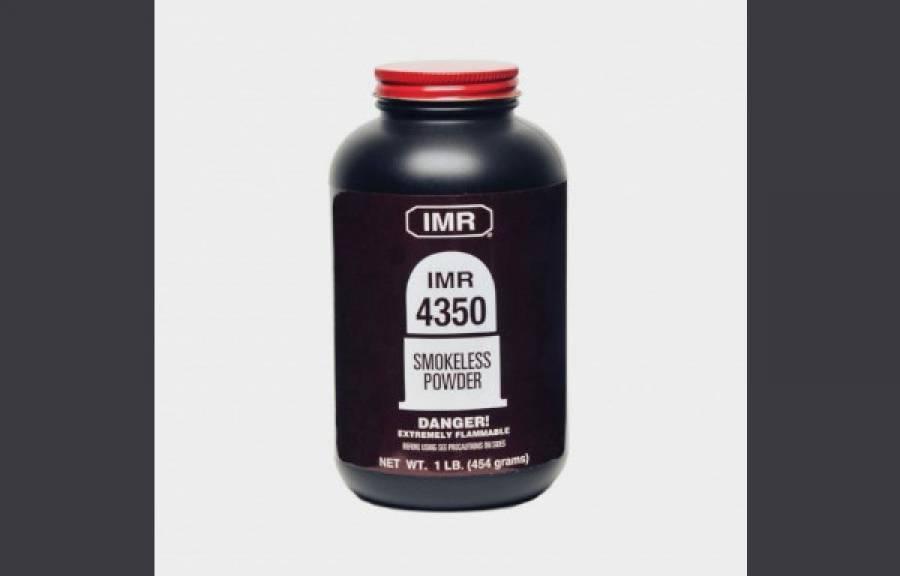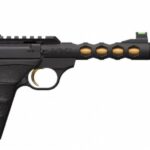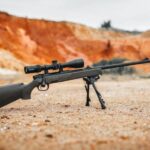Table of Contents
You might have read about IMR as superior to H4350 without knowing the technical differences.
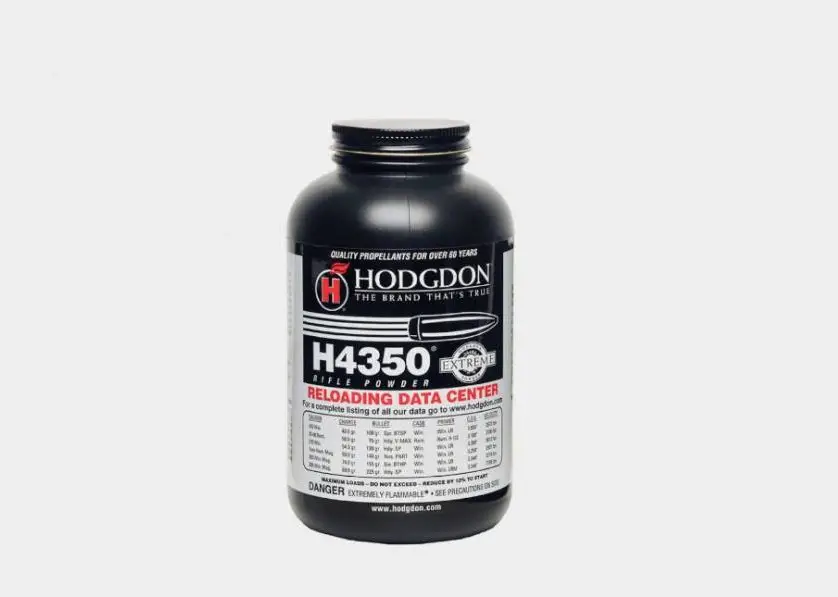
They’re amazing gun powders, but while one can effortlessly adapt to any weather condition, the other cannot.
In this article, you’ll learn more about IMR 4350 vs. H4350. Let’s find out what distinguishes one from the other.
IMR 4350 Vs. H4350
IMR 4350 and H4350 are smokeless and slow-burning rifle powders. They’re suitable for use in the sports and firearm industry.
Although both gunpowders differ and the usage will depend on the purpose of your shot, you can use IMR4350 as an alternative to H4350.
The reason is that H4350 is usually scarce and hard to find.
IMR 4350
IMR 4350 is a popular rifle powder from the Hodgdon Powder Company.
It is considered one of the best powders for heavy cartridges, such as the 6.5 Creedmoor, 270 Winchester, 300 Win Mag, and 30-06 Springfield.
It has an extremely wide burn range similar to the IMR 3031 but is not quite as fast.
IMR 4350 is sensitive to power temperature and works best for new magnum cartridges with light bullets. Another name for the IMR 4350 is progressive powder.
H4350
The Hodgdon H4350 Powder is a versatile, ballistically efficient, extruded propellant. It is excellent in small and large-capacity cartridges with light to medium bullet weights.
It is suitable for hunters and shooters due to its extruded propellant nature. This modernized nature makes it insensitive to both hot and cold power temperatures.
IMR 4350 Vs. H4350 – Density
Gunpowder density is important to determine the amount of gun power needed for a particular application.
The density of gunpowder determines the amount of pressure produced by burning the fuel.
It is a key property of gunpowder, and you should consider it whenever you reload ammunition. Density affects performance and is largely controlled by granule shape.
IMR 4350 is an inch long with a bulk density of 57.12 lb/ft3 | 915 kg/m3 and can only absorb up to 6 percent of dinitro toluene coating.
H4350 is a non-melted magnum with a size that makes it fit in a short rifle. It has a bulk density of 56.19/ft3|900kg.
Its higher density allows it to absorb enough charges for higher velocity.
Verdict: H4350
IMR 4350 Vs. H4350 – Power Temperature Sensitivity
When using gunpowder, you want to pay attention to temperature sensitivity because the burning rate depends on the increase or decrease of the power temperature sensitivity.
IMR 4350 is temperature sensitive and cannot adapt to weather conditions. One of the reasons is that slow-burning gunpowder has little resistance to cold weather.
H4350 is an extruded fuel that can adapt to hot and cold weather conditions.
For instance, you can use the H4350 gunpowder to shoot in hot and cold weather without worrying about any effect.
Verdict: H4350
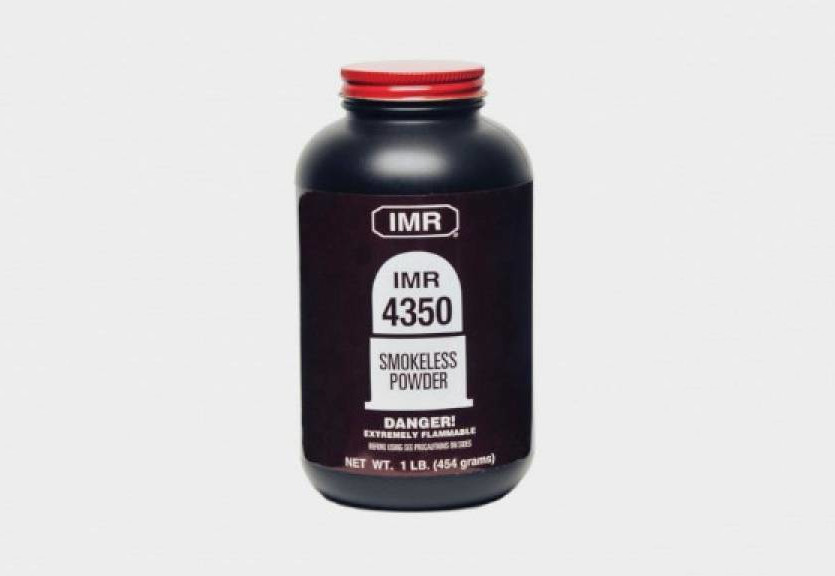
IMR 4350 Vs. H4350 – Burn Rates
The burn rate of rifle powders usually depends on the bullet weight, the number of cartridges it can cover, and the velocity expansion.
Sometimes. It also depends on the heat condition of the powder. Both IMR 4350 and H4350 fall in the category of slow-burning rifle powder.
But, there are slight differences.
IMR 4350 has a lower density. It makes it unable to cover a large number of cartridges.
It needs dinitro toluene to cover more cartridges and sustain the burning rate.
However, H4350 has a higher density that allows it to absorb more charges, expand the velocity and increase the burn rate.
Verdict: H4350
IMR 4350 Vs. H4350 – Pellet Sizes
Smokeless powders only burn on the pellet surfaces.
Since they are both extruded powders, they will have almost identical ballistics out of your firearm, but H4350 has shorter grains, giving it an edge over IMR 4350.
The specific surface area of the fuel determines the rate of combustion, and the specific surface area is determined by the size and shape of the particles.
By reducing the size of the sticks, the manufacturers increased the burning rate of the H4350.
Also, most stick powder burns hot, which may impair barrel quality over time. In this category, both IMR 4350 and H4350 don’t score very high.
Verdict: Neither IMR4350 Nor H4350
IMR 4350 Vs. H4350 – Performance
The IMR4350 is known as progressive gunpowder dependent on dinitro toluene for good performance. Without the dinitro toluene, its burning rate is low.
H4350 is known as a versatile extruded propellant due to its high-performance rate. It can load up to 165 grains of powder in the shooting and cover up to 350 yards and beyond.
Verdict: H4350
IMR 4350 Vs. H4350 – Pressure
Even though the IMR 4350 has a burning rate similar to H4350, the pressure it generates is higher.
Blowing primers and forceful bolt lifts are the most prevalent effects of high pressure, followed by primer pockets stretching before their expected end of a case lifetime.
That means it’s not as safe in short-barrel rifles as in H4350.
However, if you’re looking for a powder that can provide high velocity and excellent accuracy, IMR 4350 is an excellent choice.
IMR 4350 Vs. H4350 – Bullet Weight
IMR 4350 can only work on a bullet with light and medium weight. It can’t expand its velocity to cover thicker or heavier bullets.
H4350 is versatile and works on light and medium-weight bullets but performs better with heavier bullets that weigh up to 200 bullet grains.
Verdict: H4350
IMR 4350 Vs. H4350 – Velocity Muzzle
IMR4350 can’t expand its velocity muzzle. The primary reason here is that IMR 4350 has a lower density which makes it unable to adapt to temperature changes.
H4350 is a good choice for the velocity muzzle because the manufacturers have developed it to a modern standard powder with a higher density.
It has an average velocity muzzle of 2940 – 3040 fps. Due to its high density, it can also withstand power strains.
Verdict: H4350
IMR 4350 Vs H4350 – Metering
Hodgdon manufactured these powders with the same pellet pattern and stick shapes.
The pellets are shaped like tiny cylinders with flat ends, which allows them to be stacked in even layers inside the cartridge.
While very efficient in rifle ammunition, it isn’t easy to meter them precisely, which can result in measurement variations.
The cylinders or sticks may shatter, causing further discrepancies.
Verdict: Neither IMR4350 Nor H4350
IMR 4350 Vs. H4350 – Safety Tips
IMR 4350 and H4350 are explosive gunpowder that can catch fire if exposed to excess heat. They can also cause burns on the skin and eyes.
Here are a few safety tips you should consider before using them:
- Always ensure to wear anti-static conductive shoes.
- Use a dust mask or cartridge respirator.
- Use a safety glass with lateral protection.
- Get cotton gloves that you can change frequently.
Wrap Up
So which one is better? I’d pick H4350.
It has a slightly higher energy density and performs better in cold temperatures.
They’ll both get the job done well enough, but when it comes to power and performance, H4350 is the clear winner.

